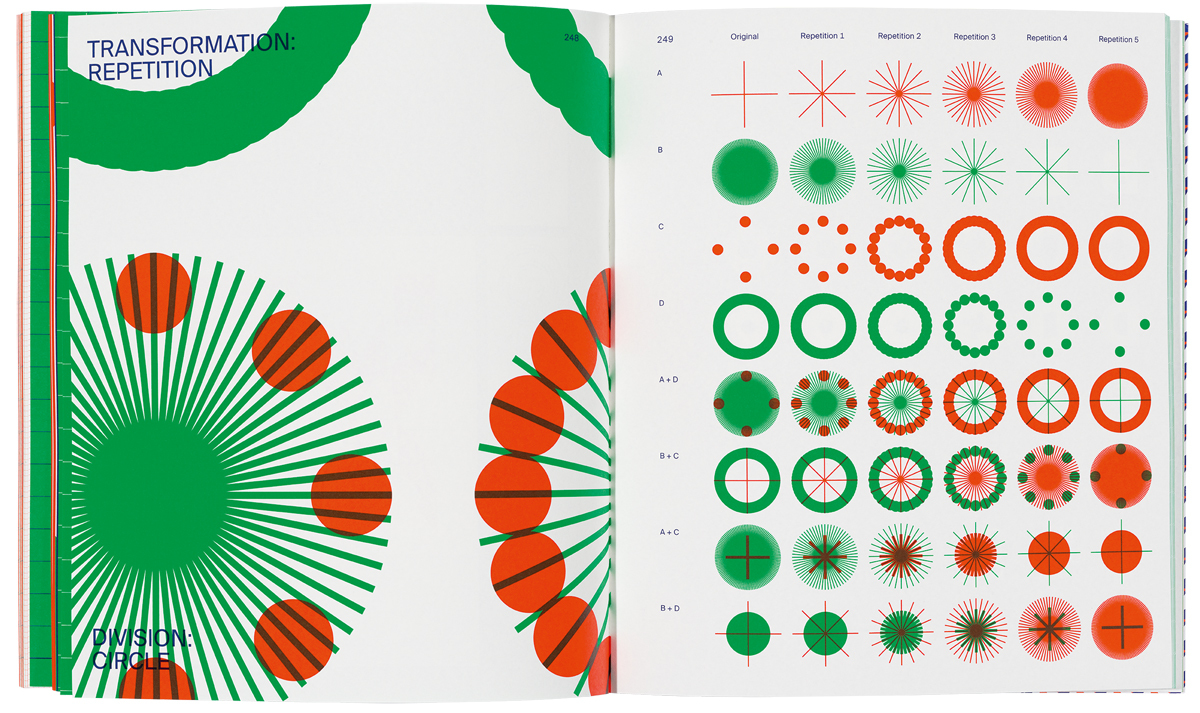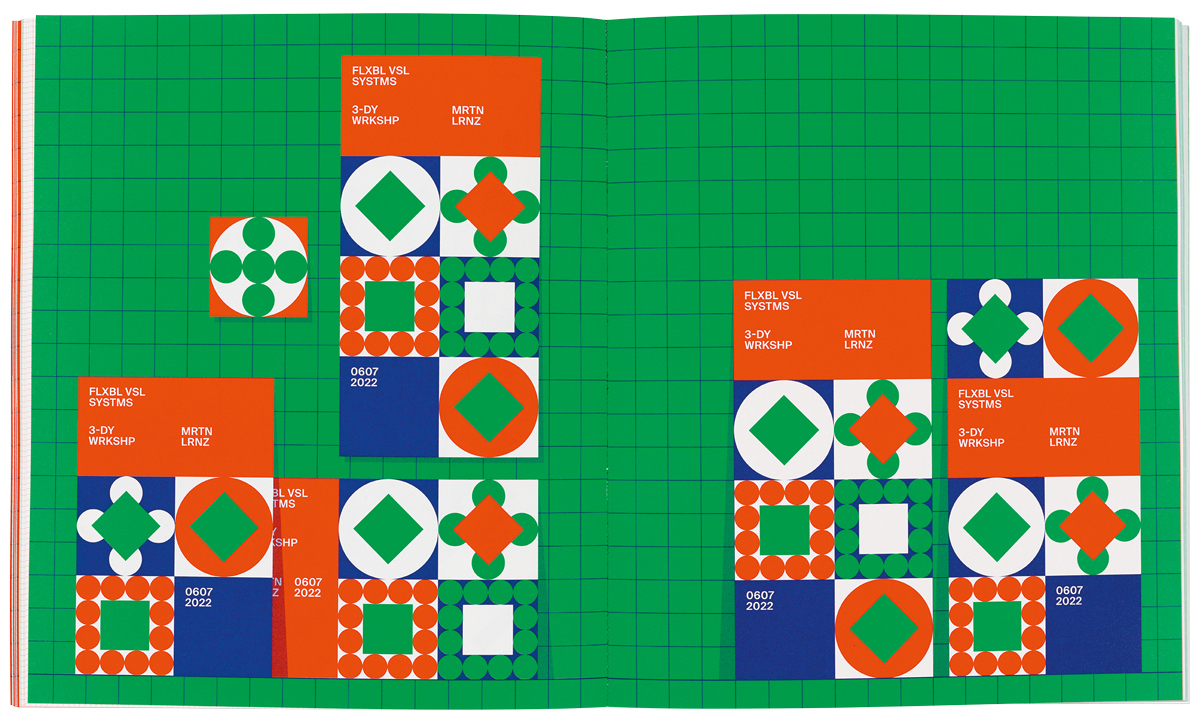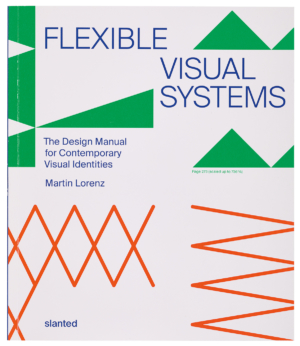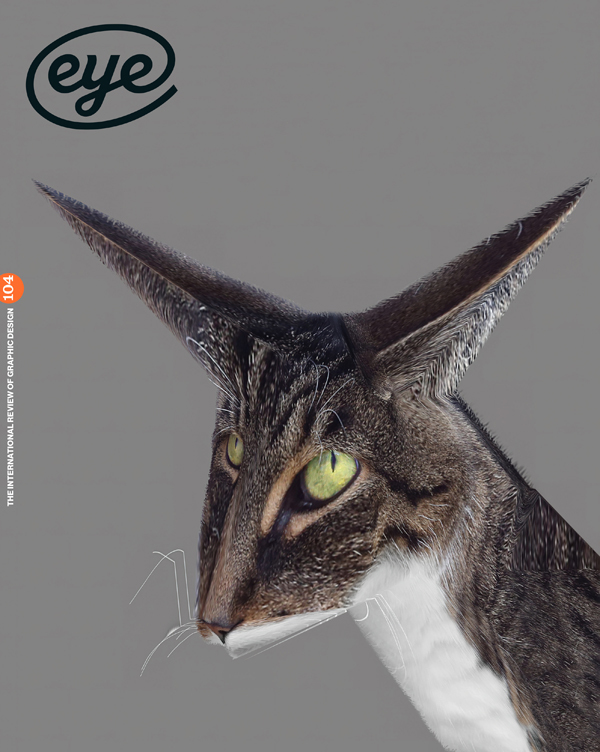Spring 2023
Let the system do the work
Flexible Visual Systems: The Design Manual for Contemporary Visual Identities
Written and designed by Dr Martin Lorenz, Slanted, €42
Martin Lorenz’s Flexible Visual Systems: The Design Manual for Contemporary Visual Identities is a proposal for a new way of working for designers. Lorenz first formulated his approach while working at the Hort design studio with Eike König and the subsequent book came out of the PhD thesis he undertook at the University of Barcelona, which explains its almost academic nature. Lorenz is currently a practising designer at TwoPoints.net and an established teacher in Barcelona and The Hague. I was fortunate enough to interview him about the book for the Typographic Circle back in 2021 when it was first released.
It is interesting that the genesis of the book started with pens and scissors, not computers and code. As Lorenz says, ‘Think with your hands and enjoy the process.’ The book was written with graphic designers in mind, yet it has often been within the creative coding community (as well as that of designers) where the ideas have truly resonated. In some ways the book bridges these two creative arenas. Flexible Visual Systems embodies a similar dual aspect: the work looks animated, even when static on the page.
Right. Spreads from Martin Lorenz’s Flexible Visual Systems. The seductive, patterned beauty of the book belies its depth of thinking.

Flexible Visual Systems includes the early origins of systemic design. For example, Lorenz shows the construction of Dürer’s Gothic Minuscule alphabet from 1525 – the book is full of historic references that feel entirely contemporary in our digital world.
The central tenet of this working manual is one of starting with components that build into assets … and ultimately applications. Lorenz shows us how to initially take simple elements and build them into complex and beautifully rich systems. Ultimately, it is about how to build flexible visual identities that are fit for purpose in our ever-changing world.
Lorenz explains the advantages of a grid – but recognises its limitations. Even though the process can feel rational and gridded, his intention is to get his readers and students to break out from the constraints of current design software and to open up their thinking. The book is full of helpful and instructional lists:
1. Let the system do the work
2. The process is the result
3. Everything can be programmed
4. Program with everything
5. Do it wrong
Lorenz takes us through modular typography, and on to form-based systems (triangles, squares, pentagons, hexagons and circles), object-based systems, and into transformation-based systems (mirror, skew, graduate, etc). The possibilities of these feel endless.
The seductive, patterned beauty of the book belies its depth of thinking. Flexible Visual Systems is a book that can be loved on a surface level, but the more you understand the process Lorenz is putting forward, the more interesting the potential outputs can be. Many students initially take his process and mimic the visual work he does – but then push further into other graphic places. As he says: ‘Imitation can be the first step to learning.’
The book itself is a thing of delight. Reference images are not included (instead URLs are noted for readers to look up), so the page design is simple and single-minded. The book uses a limited colour palette – three Pantone spot colours – to wonderful effect. Lorenz acknowledges the powerful role of colour in identity design, but states: ‘colour choice is very much context related. It depends on time, place and culture.’ He quotes Karl Gerstner: ‘If form is the body, then colour is the soul.’ This book deals with the form brilliantly.
Ultimately
the book’s premise is based on play and experimentation –
trusting the process itself and then celebrating the results.
Jim Sutherland, graphic designer, London
First published in Eye no. 104 vol. 26, 2023

Eye is the world’s most beautiful and collectable graphic design journal, published for professional designers, students and anyone interested in critical, informed writing about graphic design and visual culture. It is available from all good design bookshops and online at the Eye shop, where you can buy subscriptions and single issues.

